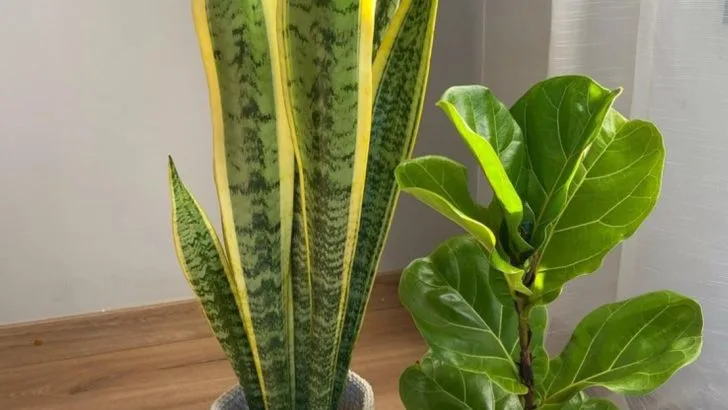The secret to a stunning indoor plant display isn’t just the plants—it’s how you pair them. Thoughtful combinations of color, texture, and shape can instantly elevate any room, creating a layered, designer-worthy look.
By mixing tall and trailing plants, pairing bold foliage with delicate blooms, or combining contrasting leaf patterns, you can craft displays that feel intentional and dynamic. The right combinations also help highlight architectural features and complement your existing décor.
In this article, discover 12 indoor plant combinations that instantly elevate any room—and transform your space with effortless style and natural beauty.
Fiddle Leaf Fig and Snake Plant
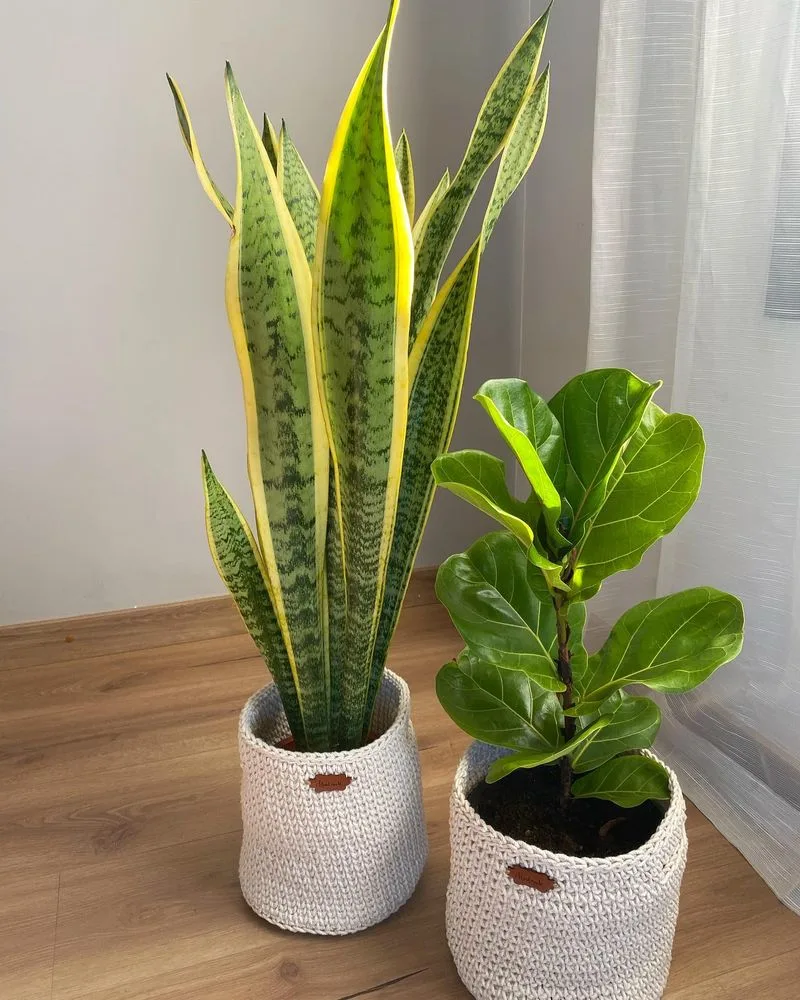
A soaring fiddle leaf fig paired with the structured lines of a snake plant creates an artistic contrast. The fig’s broad leaves offer a dramatic presence, while the snake plant stands tall with its sword-like foliage. Together, they embody a blend of grace and resilience. Their differing heights and textures add depth, making them ideal for a corner spot where light is abundant. The fiddle leaf’s vibrant greens juxtapose beautifully against the snake plant’s darker tones, making this duo a favorite among interior designers.
Monstera and Pothos
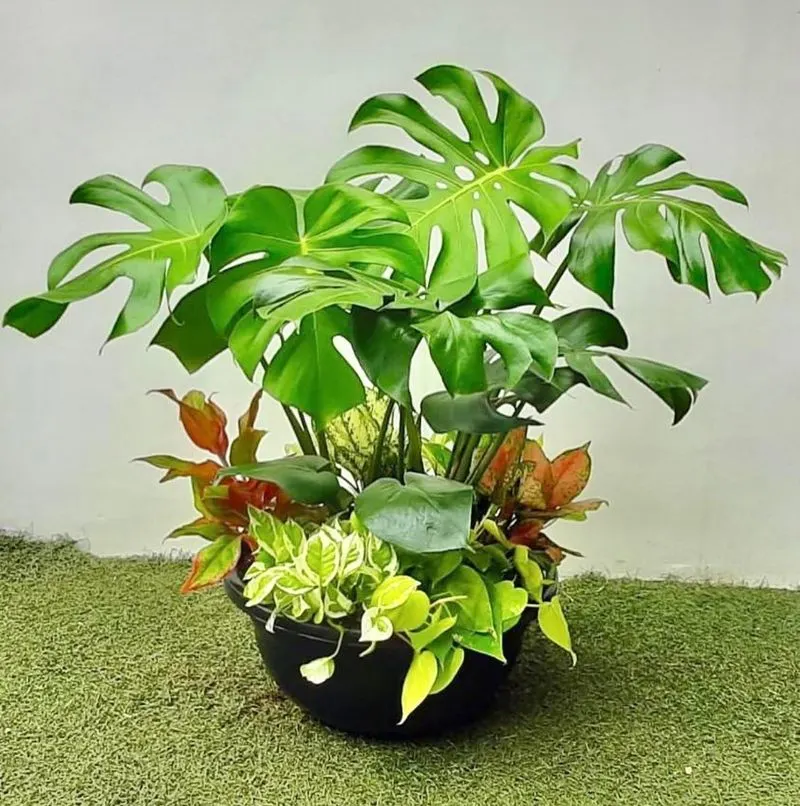
Monstera, with its iconic split leaves, paired with the trailing elegance of pothos, crafts a tropical ambiance. The monstera’s bold, architectural shape complements the pothos’ cascading vines, creating a lush canopy effect. Perfect for a bookshelf or mantle, this combination brings the essence of a rainforest indoors. Pothos, known for its air-purifying qualities, ensures that the duo doesn’t just look good but contributes to a healthier living space. Their low-maintenance nature makes them ideal companions for those with busy lifestyles.
Peace Lily and ZZ Plant
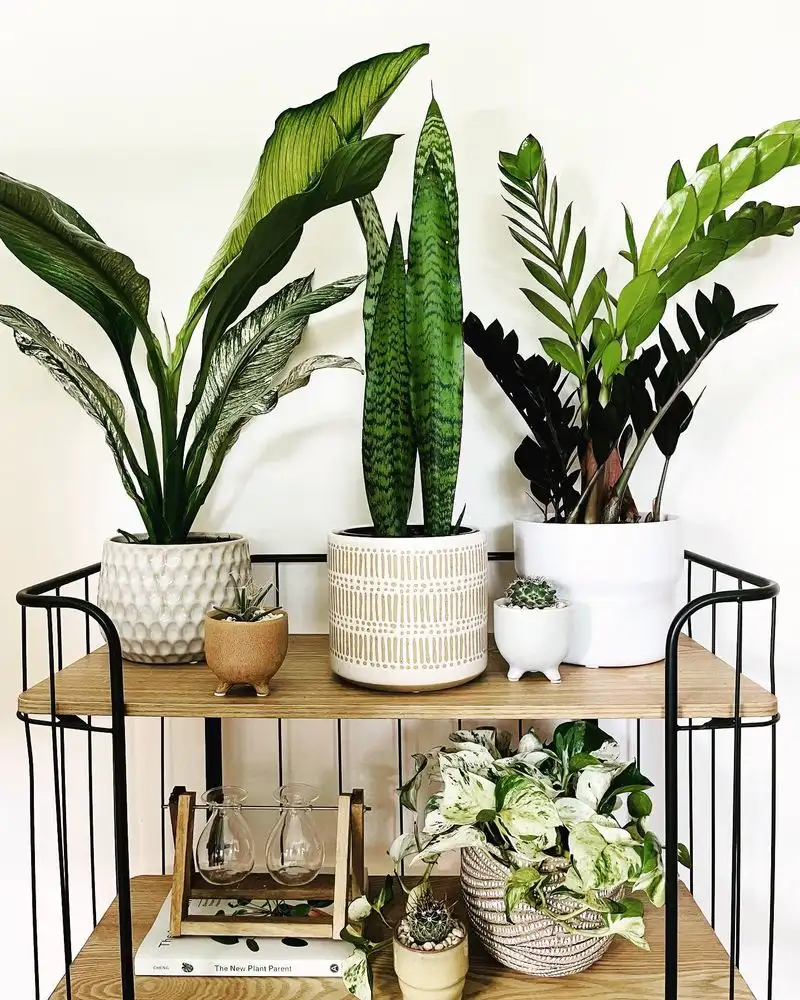
A peace lily’s graceful blooms paired with the sculptural form of a ZZ plant is a match made in heaven. The peace lily, with its white blossoms, adds a touch of elegance, while the ZZ plant’s glossy leaves bring a modern touch. This pairing works wonders in spaces that require a bit of sophistication and simplicity. The peace lily’s ability to thrive in lower light complements the ZZ’s drought tolerance, making them a practical and attractive duo for beginners and seasoned plant lovers alike.
Spider Plant and Boston Fern
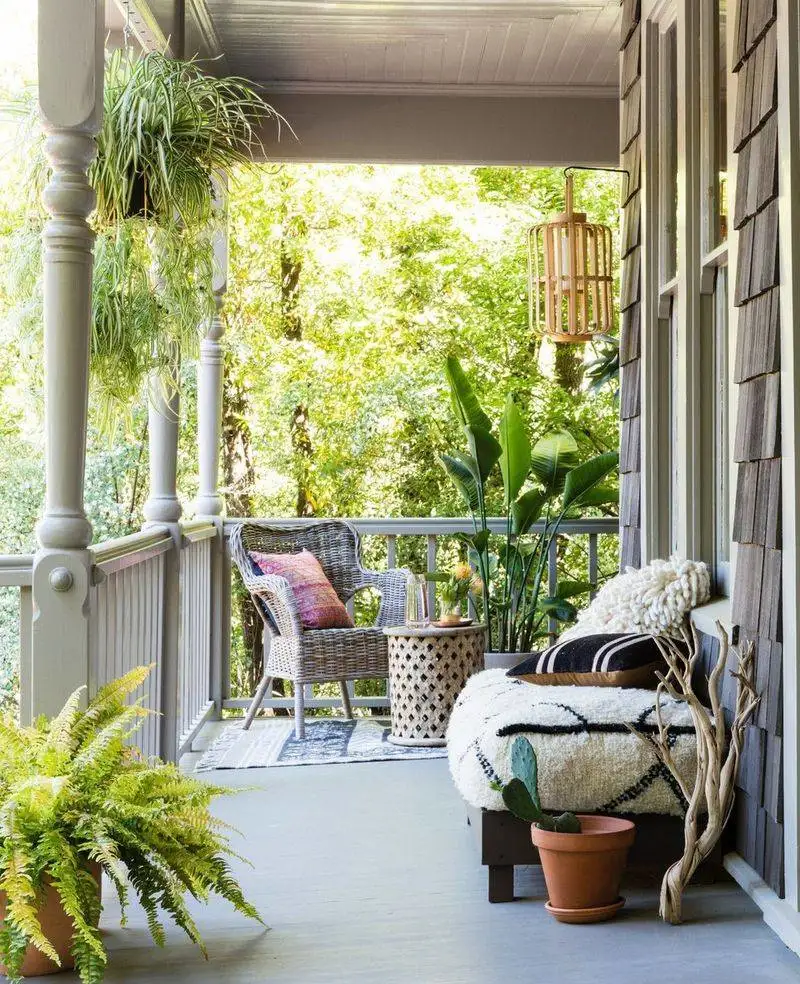
Spider plants, with their arching leaves, and Boston ferns, known for their feathery fronds, create a dynamic look. These plants are champions of air purification, making them not just visually appealing but also beneficial for indoor air quality. The spider plant’s adaptability matches well with the Boston fern’s love for humidity, making them suitable for kitchens or bathrooms. Their lush green foliage brings a fresh, lively feel to any setting, turning mundane spaces into refreshing retreats.
Rubber Plant and Bird of Paradise

Rubber plants bring a sleek, modern vibe, while the bird of paradise offers a tropical flair with its striking blooms. This combination stands out in contemporary settings, providing a contrast of textures and colors. The rubber plant’s deep green leaves play against the vibrant orange and blue flowers of the bird of paradise, creating a visually captivating scene. Ideal for offices or living rooms, this pairing is not only stylish but also easy to care for, requiring moderate light and watering.
Philodendron and Maidenhair Fern
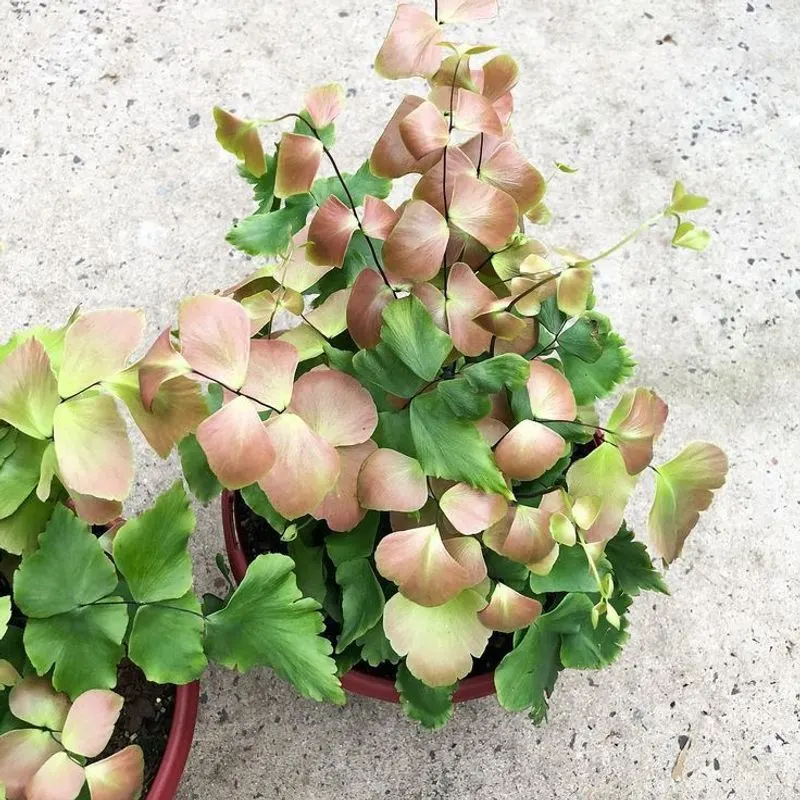
The heart-shaped leaves of philodendron and the delicate fronds of maidenhair fern create a romantic, whimsical atmosphere. Their complementary forms and shades of green provide visual interest and bring a touch of nature to indoor spaces. Suitable for spots with indirect light, this pair thrives in humidity, making them ideal for bathrooms or shaded corners. The philodendron’s robust growth habits support the more finicky maidenhair, ensuring a healthy and vibrant partnership that adds charm to any room.
Calathea and Dracaena
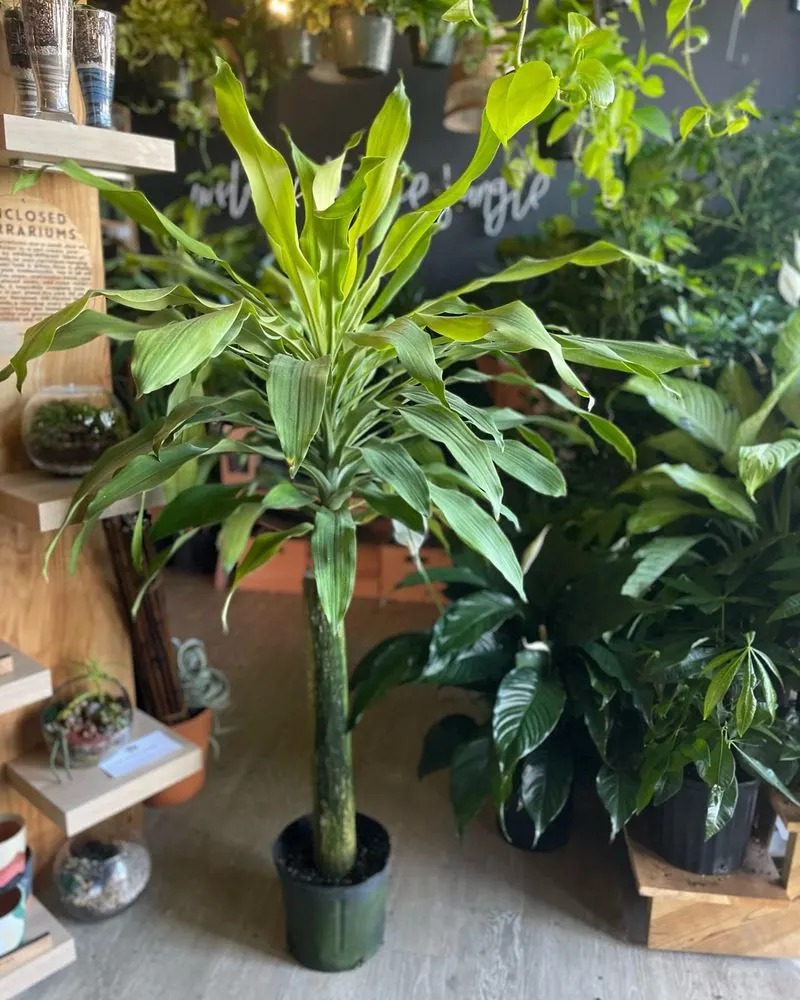
Calatheas are celebrated for their vibrant, patterned leaves, while dracaenas offer structural elegance with their slender forms. Together, they craft a bold statement that draws the eye and sparks conversation. This combination is perfect for those who appreciate artistry in nature, as the calathea’s intricate designs contrast beautifully with the dracaena’s minimalist appeal. Both plants appreciate similar care, thriving in indirect light and regular watering. Their partnership is a testament to diversity in design, ensuring your space feels both curated and inviting.
Succulents and Cacti

Succulents and cacti, with their myriad shapes and colors, offer endless possibilities for creativity. Their drought-tolerant nature makes them perfect for sunny spots that require minimal care. This combination is ideal for those who appreciate low-maintenance beauty with a touch of the exotic. The variety in textures—from spiky cacti to plump succulents—adds visual intrigue, while their compact size allows for versatile arrangement. Perfect for windowsills or office desks, they bring a hint of desert magic into any environment.
Bamboo Palm and Jade Plant
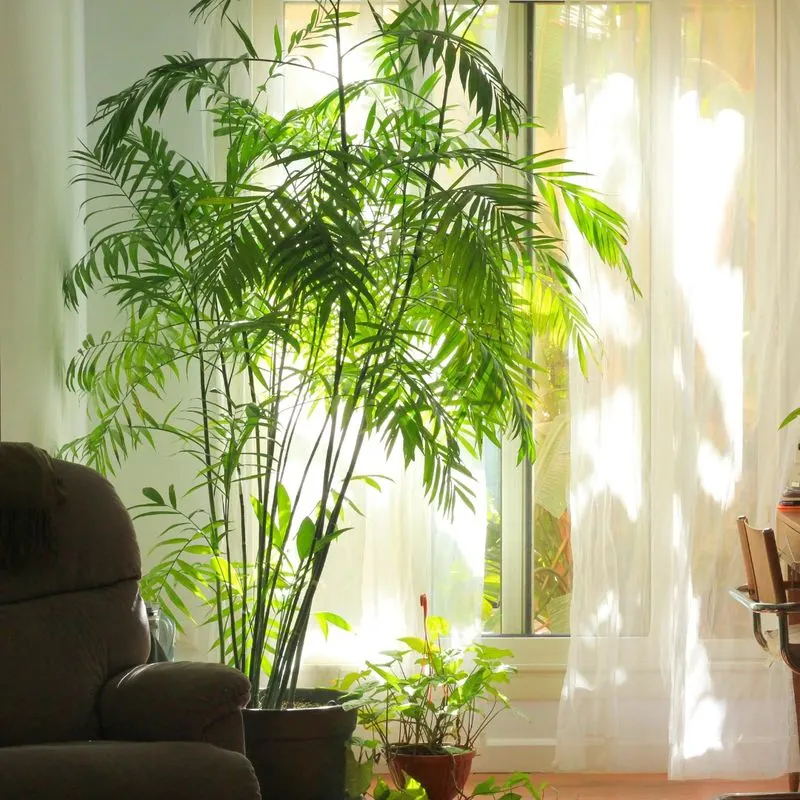
Bamboo palms, known for their graceful, arching fronds, and the jade plant, with its succulent, rounded leaves, offer a balanced and harmonious look. This combination creates a peaceful, Zen-inspired atmosphere, perfect for meditation rooms or quiet corners. The bamboo palm’s air-purifying qualities enhance the calming effect, while the jade plant’s reputation for prosperity makes it a popular choice. Together, they embody tranquility and abundance, providing a serene backdrop for relaxation or focused work.
Aloe Vera and Echeveria
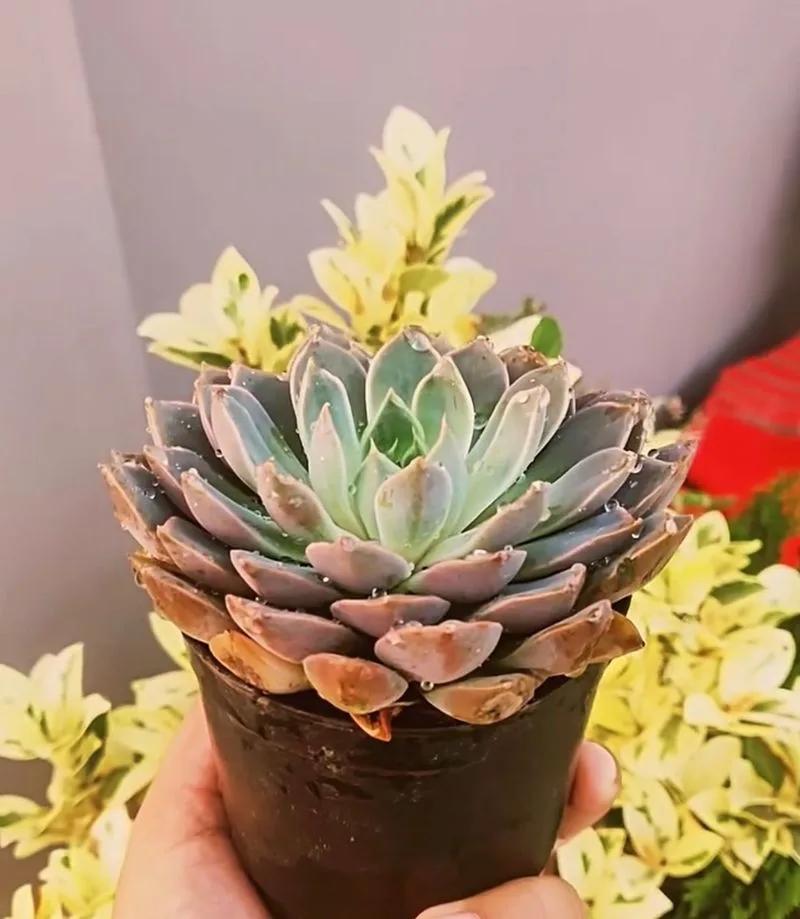
Aloe vera, known for its medicinal properties, and echeveria, with its rosette-shaped growth, are a delightful pair. Both thrive in sunny spots and require minimal watering, making them easy to care for. Their distinct textures and shades of green complement each other, offering a pleasing aesthetic. Aloe’s upright form contrasts with echeveria’s compact rosettes, creating a balanced visual appeal. Ideal for verandas or sunrooms, this duo brings a sense of calm and well-being, merging beauty with functionality.
Lavender and Rosemary
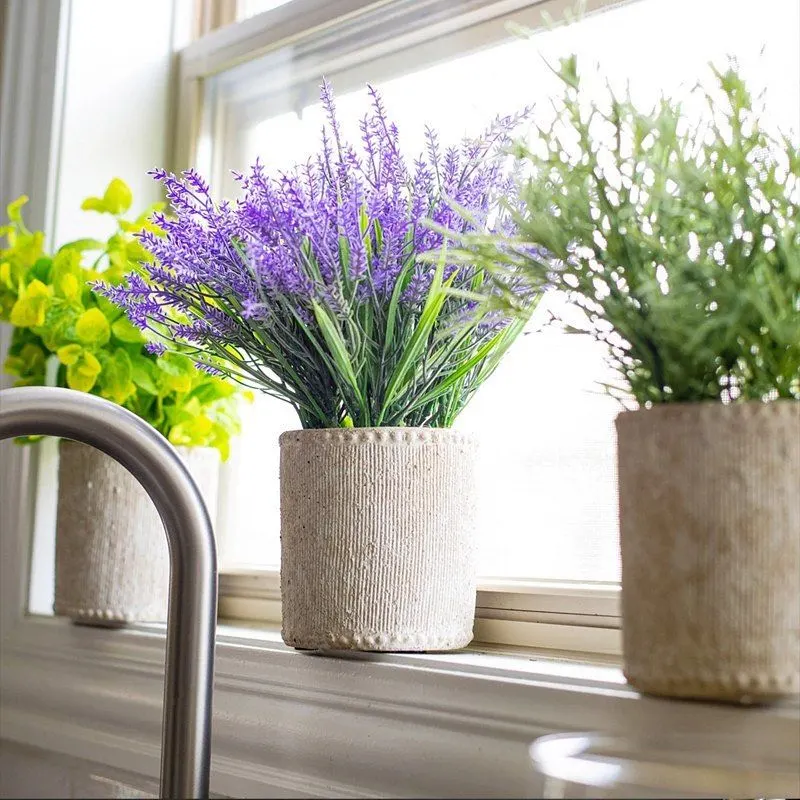
Lavender and rosemary are more than just culinary companions; their fragrant foliage and flowers invigorate any space. Perfect for kitchens or patios, the soothing scent of lavender complements the robust aroma of rosemary. Lavender’s purple blooms add a splash of color, while rosemary’s needle-like leaves bring texture and structure. This pairing is not just a feast for the senses but also attracts beneficial insects, enhancing your home’s ecosystem. Their presence can transform everyday routines into momentous occasions.
Norfolk Island Pine and Parlor Palm
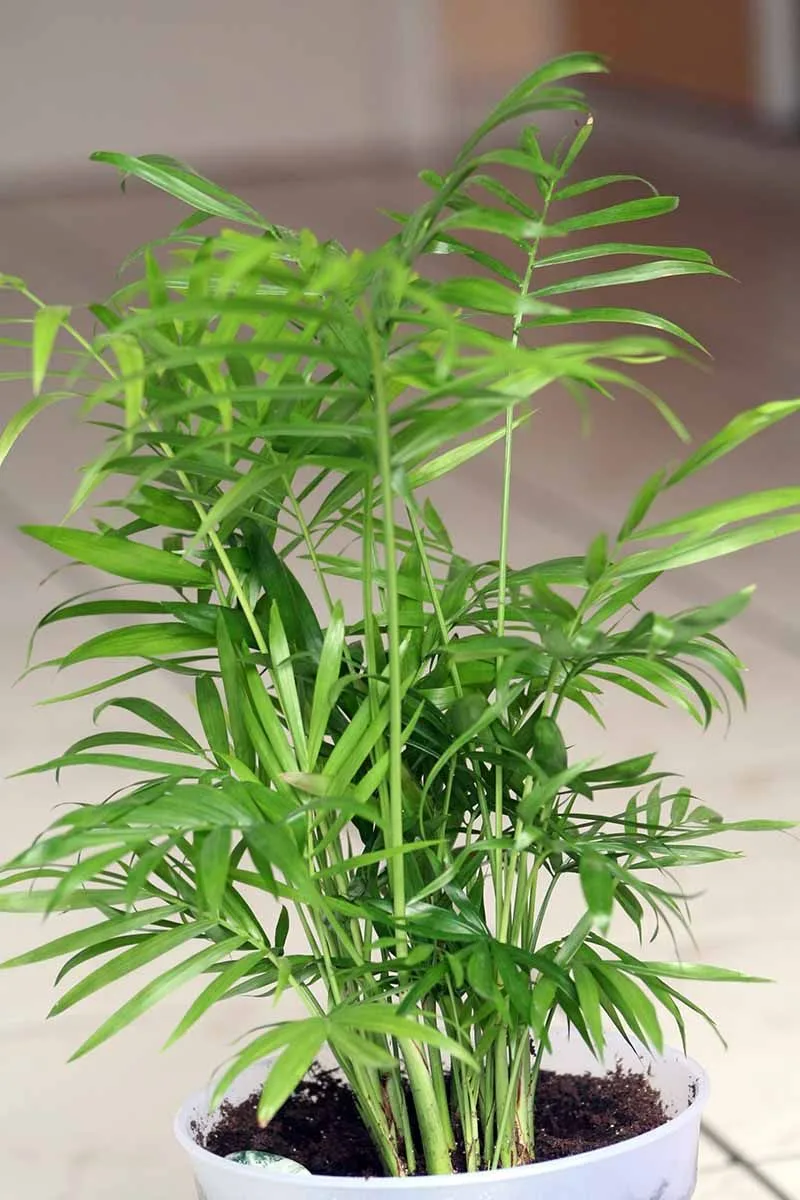
The Norfolk Island pine, reminiscent of a miniature Christmas tree, paired with the parlor palm, creates an inviting and festive atmosphere. Perfect for living rooms or entryways, this duo combines the pine’s conical shape with the parlor palm’s arching fronds. Together, they evoke a sense of celebration and warmth, ideal for holiday settings or year-round enjoyment. Both plants are relatively easy to maintain, requiring moderate light and watering, making them suitable for both plant novices and experts alike.

